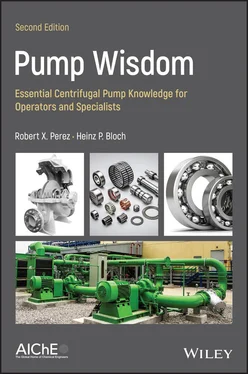
Figure 3.1 ANSI pump set on a stilt‐mounted baseplate.
Source: ITT/Goulds, Seneca Falls, NY.
There is one exception, however. Vertical in‐line pumps ( Figure 3.2) are not to be bolted to the foundation. They are intended to respond to thermal and other growths of the connected piping and must be allowed to float or slide a fraction of an inch in the x ‐ and y ‐directions. The foundation mass under vertical in‐line pumps can be much less than that under the more typical horizontal pump.
Making the foundation mass three to five times the mass of the pump and its driver has been the rule of thumb for horizontal pumps. For vertical in‐line pumps, it is acceptable to make the concrete foundation about one‐and‐a‐half to twice the mass of the pump‐and‐driver combination [3].

Figure 3.2 Vertical in‐line pumps are not to be bolted to the foundation. They should be allowed to move with the connected pipes.
Why Not to Install Pump Sets in the As‐Shipped Condition
There are obviously some flaws in the grout surrounding the baseplate in Figure 3.3. (On the other hand, the equipment owner invested in a very modern small oil mist lubrication unit). Note the hollow space under the electric motor. Lack of support under motors often invites resonant vibration. Rigorous written installation procedures are needed and must be adhered to if long equipment life is to be achieved.
Before delving into other installation matters, note the alignment jacking provisions in Figure 3.4, where the purchaser specified an arrangement that allows insertion (and later removal) of alignment‐jacking tabs in the x ‐ and y ‐directions next to each of the four motor feet. (A fixed jacking tab arrangement can be seen later – Figure 14.3).
Portable jacking tabs, Figure 3.4, (inserted in a welded‐on bracket), allow driver alignment moves to be made. Thereafter, the jacking bolts are backed‐off, and the entire tab is removed. When jack screws are left tightened against the motor feet, motor heat, and thermal growth might force the feet into these bolts even more, sometimes causing the entire motor casing to distort [1]. Note, therefore, that backing‐off jacking bolts should be one of many installation checklist items.

Figure 3.3 A typical, but obviously flawed, “conventional” pump foundation.
Source: Lubrication Systems Company, Houston, Texas.

Figure 3.4 Removable alignment jacking tabs shown inserted in three of four locations next to the two motor feet shown here.
Source: Stay‐Tru ®, Houston, Texas.
To ensure level‐mounting throughout, the baseplate is placed on a foundation into which hold‐down bolts or anchor bolts ( Figure 3.5) were encased when the reinforced concrete foundation was being poured [2]. For proper stretch and long life, these anchor bolts ( Figure 3.5) must have a diameter‐to‐length ratio somewhere between 1 : 10 and 1 : 12. The anchor bolts are provided with steel sleeves and soft filler. The sleeves prevent entry of grout and accommodate the differing amounts of thermal growth of a concrete foundation relative to that of a steel baseplate.

Figure 3.5 Foundation anchor bolts and sleeves encased in pump foundation.
Source: Based on Barringer and Monroe [2].
Conventional vs. Prefilled Baseplate Installations
In general, horizontal process pumps and drivers are shipped and received as a “set” or package, i.e. already premounted on a baseplate. Seeing a conveniently mounted‐for‐shipping pump set very often leads to the erroneous assumption that the entire package can simply be hoisted up and placed on a suitable foundation. However, that's certainly not best practice and best‐in‐class (BiC) plants will not allow it.
Shipping method has little to do with how pumps should best be installed in the field, and pump installation issues merit considerable attention. Again, before installing a conventional baseplate, the pump and its driver must be removed from the baseplate and set aside. Leveling screws ( Figure 3.6) are then used in conjunction with laser‐optic tools or a machinist's precision level. With the help of these tools, the baseplate‐mounting pads are brought into flat and parallel condition side‐to‐side, end‐to‐end, and also diagonally, all within an accuracy of 0.001 in./ft (~0.08 mm/m) or better. The nuts engaging the anchor bolts are being secured next, and the hollow spaces within the baseplate as well as the space between baseplate and foundation filled with epoxy grout.
The traditional approach to joining the baseplate to the foundation has been to build a liquid‐tight wooden form around the perimeter of the foundation and fill the void between the baseplate and the foundation with either a cement‐based or epoxy grout. Both grouting approaches are considered conventional and should not be confused with the preferred epoxy prefilled method which is highlighted below.
Grouting a baseplate or skid to a foundation requires careful attention to many details. A successful grout job will provide a mounting surface for the equipment that is flat, level, very rigid, and completely bonded to the foundation system. Many times these attributes are not obtained during the first attempt at grouting, and expensive field correction techniques have to be employed. Predominant installation problems involve voids and distortion of the mounting surfaces. In fact, the most frequently overlooked foundation and pipe support problems are related to foundation settling.

Figure 3.6 Steel baseplate with anchor bolt shown on left and leveling screw on right. A chock (thick steel washer) is shown between leveling screw and foundation [2].
Source: Modern Pumping Today.
How so? Just as a residential dwelling or sidewalk will probably shift, settle, and crack over time, pump foundations and supports should be expected to do the same. It would be prudent to plan for preventive or corrective action over time or during plant shutdowns. Fortunately, there is now an even better option; it involves the use of standard baseplates prefilled with epoxy.
Epoxy Prefilled Baseplates
As of about 2000, Best Practices Companies (BPCs) have increasingly used “monolithic” (all‐in‐one, epoxy prefilled) steel baseplates in sizes approaching 1.5 m × 2.5 m (about 5 ft × 8 ft). Larger sizes become cumbersome due to heavy weight.
Читать дальше















